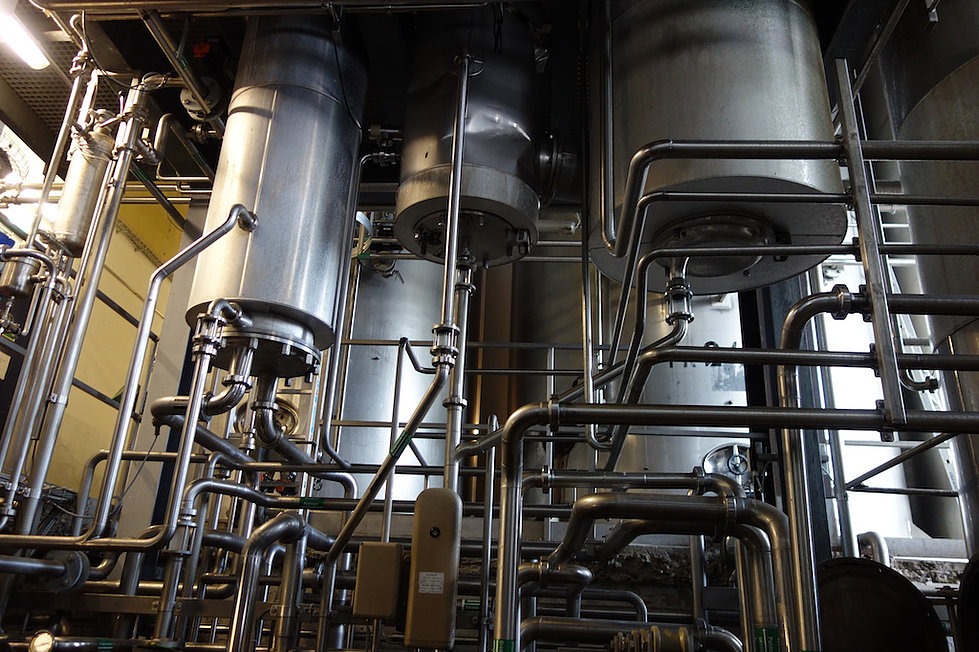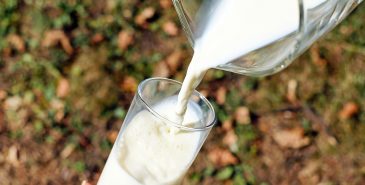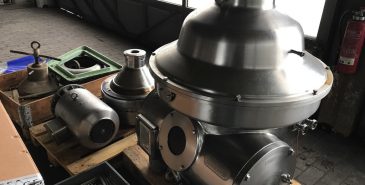
By: me-trading
November 12, 2018
MVR VS. TVR Evaporators: Advantages And Disadvantages
Mechanical vapor recompression (MVR) and thermal vapor recompression (TVR) are the two prevailing evaporation methods in the dairy industry. It is undisputed that both have their benefits, but dairies should make a thorough evaluation which of the two evaporation types suits best to their business operation.
Thermal Vapour Recompression Explained
When evaporation is executed by thermal vapor recompression, a blower, compressor or jet ejector recompresses live steam respectively motive steam. By this means the pressure of the live steam coming from a boiling chamber is increased. The increase in pressure subsequently leads to a higher temperature of the vapor.
The compressors used in TVR plants, work according to the steam jet pump principle which means a simple and effective design with high operational reliability.
Parts of the steam, the so-called motive steam, is required for operating the compressor. This exact steam is recycled by being transferred as excess vapor to the next effect of the evaporator plant.
Mechanical Vapour Recompression
MVR Evaporators are comparatively low on energy consumption. There are two reasons for this: is that the compressors of such plants are electricity driven and the vapor leaving the evaporator can be fully recycled. The fact that Evaporators with MVR use electricity to drive the impeller to compress the vapors leads to higher pressure and hence to higher temperatures as well.
The allure in MVR lies in the fact that the energy of the vapor is efficiently used to maintain the evaporators heat balance. This decreases the need for additional steam for heating and ensures stable processing conditions.
MVR And TVR Compared
Evaporators with MVR
+ energy efficient
+ do not need (that) much space
+ reduced CO2 footprint
+ low long-term costs
– very high investment costs
– efficiency depends on production volume
Evaporators with TVR
+ implementation of flavor recovery possible
+ simple and effective design
+ low wear and tear
+ operational reliability
+ less/low investment costs
– high energy consumption
– high long-term costs
– negative CO2 footprint
– intensive in space requirements
Conclusion
As a conclusion, we can tell that the decision whether to utilize an evaporator with MVR or a plant with TVR depends on several factors like the consideration of steam production cost or the size of the company and its production volume. Below are some factors to consider prior to deciding which kind of evaporator would be suitable for your company.
-
Upfront capital cost
-
Capacity and operating data like annual operating hours
-
Product properties like viscosity
-
Utility requirements like electricity or machine parts exposed to wear and tear
-
Site conditions like space requirements
-
Personnel cost for servicing and operating the plant
-
The legal framework of your production location
Generally, MVR evaporators should be used in certain mid-size and all large companies where energy efficiency is a priority, while thermo-compression units tend to limit their use to small units, where energy consumption is less of an issue.
Case Study
If you are interested in an interesting case study concerning an evaluation of the pros and cons of MVR to TVR .evaporators, I strongly recommend this article.
Thank you for processing this article! 🙂
If you found this piece useful, we would be very happy about you subscribing to our mailing list. This way you will never miss an update. You are also welcome to share with your friends and colleagues.
Cheers,
The M&E Trading Team
Subscribe to Newsletter
-
 March 11, 2019
March 11, 2019What is ESL Milk? A Comprehensive Guide
Everyone knows what UHT-milk is and many know roughly how it is produced.… -
 March 11, 2019
March 11, 2019Buying Used Dairy Equipment – Advantages and Disadvantages
As your dairy business grows, you will necessarily reach a point where yo… -
March 11, 2019
Increased Fat Content in the Discharge of you Clarifying Separator
Having a high-fat content in the discharge of your clarifying separator can be…


0 Comments